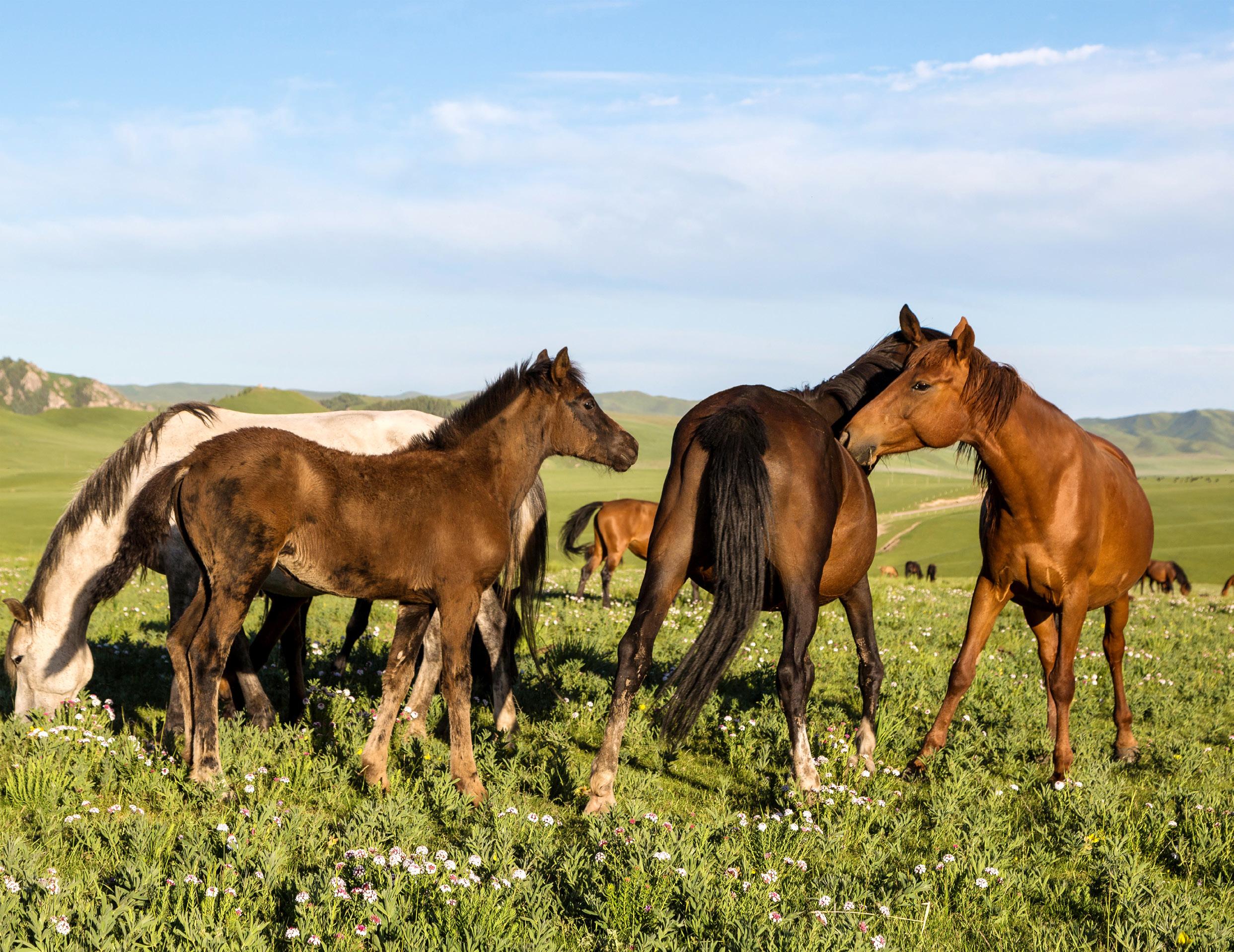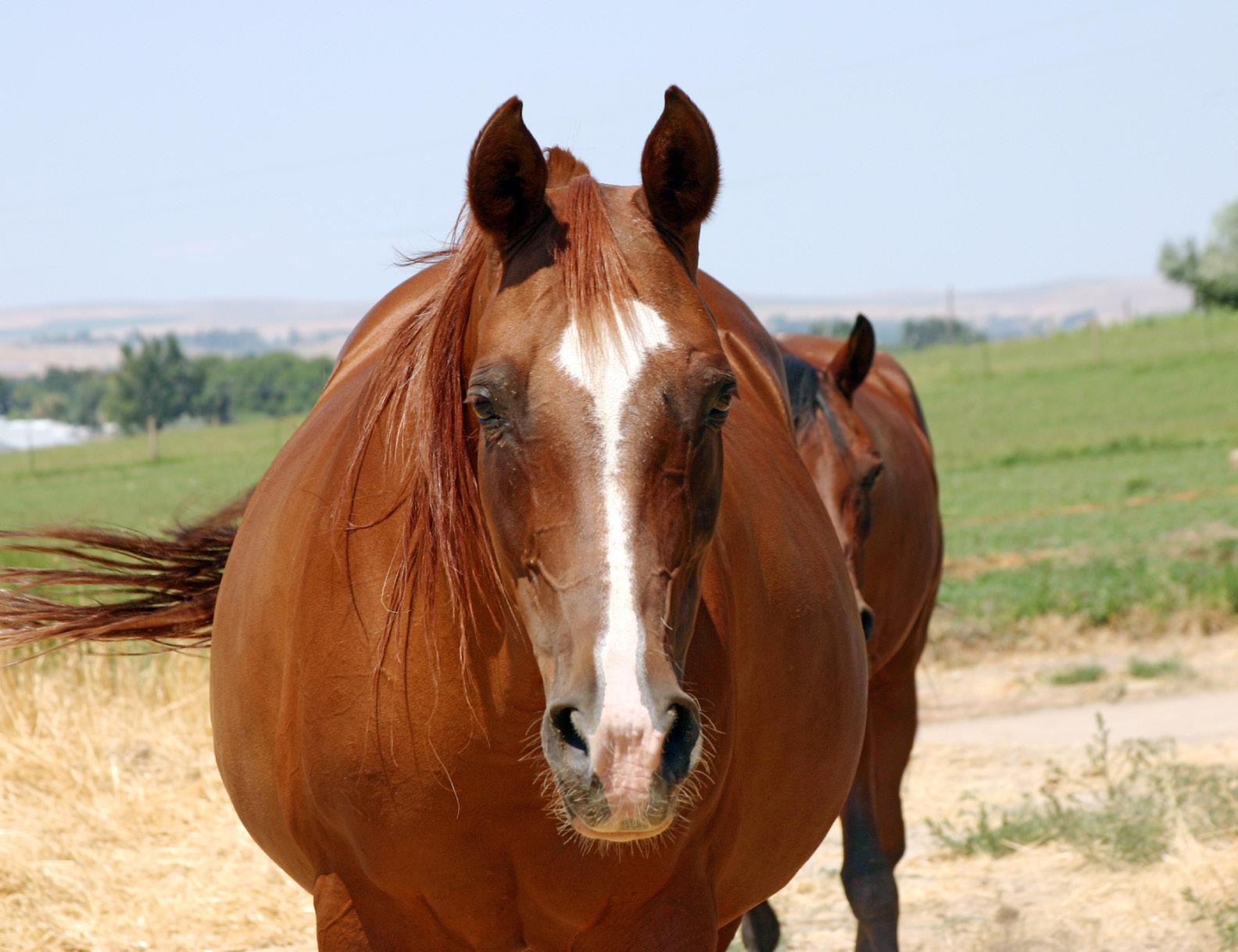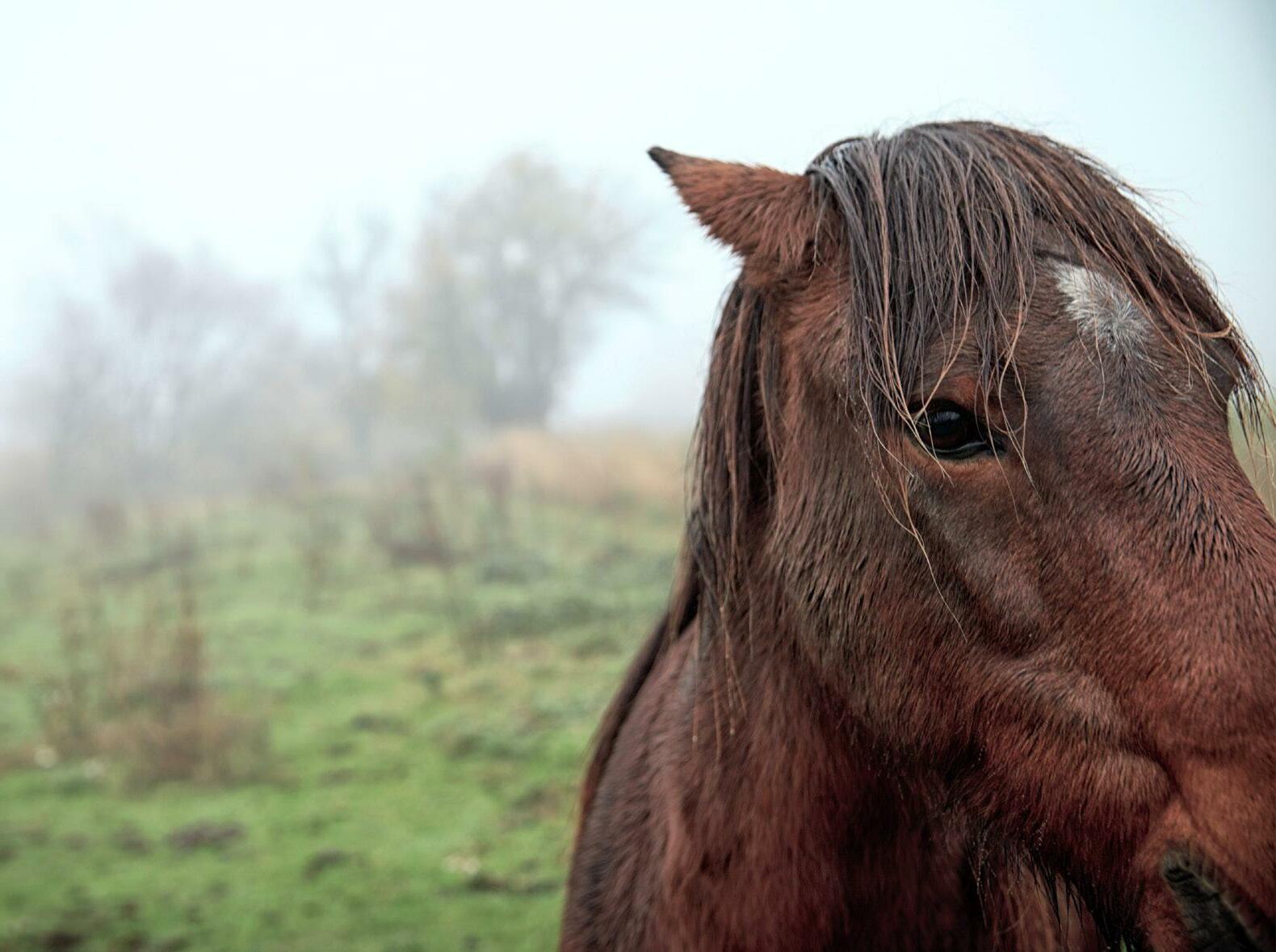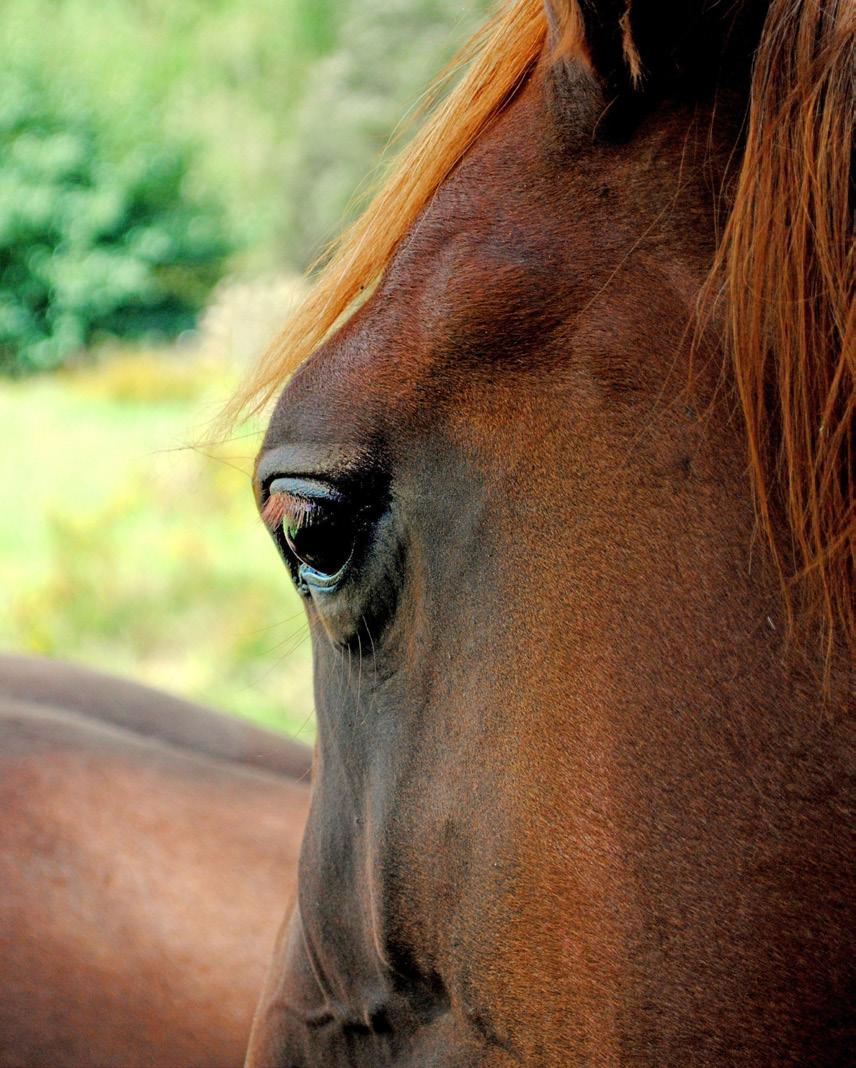
6 minute read
Feature: Ask your mare
FEATURE
Ask your mare
You can tell a gelding, but you have to ask a mare. DR JENNIFER STEWART sheds a light on ‘mare-ishness’ and its possible causes.
Behavioural problems in mares – where to begin? ‘Mare-ishness’ is easily recognised as generally awkward or recalcitrant behaviour. Other common complaints include refusal to move forward and frequent urination, with some mares showing
aggressive behaviour. Behavioural
problems related to the mare’s oestrous
cycle can cause problems with riding The effect of ovarian activity is considered an important factor in reduced athletic performance. Trainers and riders often complain that strong oestrus behaviour ‘distracts’ mares, making them more difficult to handle. Others attribute reduced performance to aggressive behaviour and the presence of pain (usually back pain or mild colic). These reports are so common that it is often taken as fact that mares in oestrus perform below their potential.
Often likened to premenstrual tension or premenstrual syndrome in primates, ‘mare-ish’ behaviour is not due to PMT or PMS. Menstruation is the shedding of the uterine lining. Beyond primates, only bats, the elephant shrew and the spiny mouse menstruate.
Together, reproductive and social behaviours in mares are regulated by a complex interaction of the nervous
system and hormones. Temperament is the behaviour that results from physical, hormonal and nervous organisation and is very sensitive to physical and social cues – both of which are inextricably linked to domestication.
Behavioural signs of oestrus varies greatly between mares and there are clear differences between breeds and individuals. Although some of these unwanted behaviours and performance problems may be related to phases of the oestrus cycle it is important to identify other possible causes. Pain, poor conformation, lack of fitness, overtraining, or low-grade lameness may present as a change in performance and recurrent low-grade tying-up affects attitude, stride length and impulsion.
Some mares cower and urinate when frightened, which can resemble oestrus behaviour. In other mares, a less than ideal alignment and conformation of the perineum (anus and vulva) can result in air entering the vagina and causing ‘wind-sucking’ which is associated with pain and inflammation. Signs include performance problems such as kicking against the rider’s leg, bolting, refusing to move forward, tail swishing and/ or symptoms of stiffness in the back. Caslick’s, a simple and common surgery, can correct this.
Another factor affecting temperament and behaviour is feeding and feeding management. Cortisol (the ‘stress hormone’) is higher in horses fed above recommended levels of energy and protein and in those on starch/sugar grain-based diets. In mares, being overweight or obese is associated with aberrations in the oestrous cycle – continuous reproductive activity, a significantly longer oestrus cycle and ovulation during the non-breeding season. Reductions in bodyweight and fat reverse these changes in the cycle, and can be achieved on a diet of hay with a balanced low-starch, high protein supplement to provide essential amino acids, vitamins and minerals. Oils have a calming effect on excitable horses – including weanlings and those prone to tying-up. Reactions to loud noise and visual stimuli are reduced in horses on 10 per cent oil diets, and working horses had lower salivary cortisol levels and less startle reactions when oils provided 11 per cent of dietary energy. Horses on high fibre, oil-enriched diets have lower heart rates and cortisol levels. In addition, measurements for spontaneous activity and reactivity (spook tests) were lower with oil fortified diets, indicating a greater degree of calmness.
Magnesium levels are inversely related to oestrogen levels (high oestrogen/ low magnesium, low oestrogen/high magnesium). The highest oestrogen levels occur at the times of oestrus/ heat, which may partially explain why some fillies seem more prone to tying up and muscular soreness at this time. Low magnesium is a very common cause of behavioural issues such as irritability and hypersensitivity to sound and touch. Muscular irritability – twitching in the muscles, increased muscle tone, elevated muscle enzymes and signs similar to tying-up – can also be caused by magnesium deficiency. Borderline and insufficient magnesium is not uncommon in most diets and it is prudent to ensure minimum recommended intakes ie 10g magnesium/day.
For any equine ‘behaviour problem’, the main challenge is accurate diagnosis. Work with your veterinarian to confirm a direct association between behaviour or performance issues and the oestrus cycle before initiation of any therapy or behaviour modification technique. To assist with diagnosing problems linked to a mare’s cycle, record on a daily basis the occurrence and intensity of the behaviour and have your mare examined by your veterinarian when the undesirable behaviour is present. This helps identify periods of performance and temperament problems and at what stage of cycle they occur. The veterinary investigation may include ultrasound,

FACING PAGE: A mare’s goal is peaceful coexistence with wellbeing for themselves, their foals and their band mates. ABOVE: In mares, being overweight or obese is associated with aberrations in the oestrous cycle.

ABOVE: Mare-ishness’ is easily recognised as generally awkward or recalcitrant behaviour.
rectal palpation, and measurement of hormone levels. Once it is confirmed that the behavioural change is related to hormonal fluctuations during oestrus, multiple treatment options are available.
Research shows that there are safe, effective methods to control oestrus. The importance of estrogen and progesterone have long been recognised and there are various methods of suppressing natural cycling in mares. Several approaches (hormone treatments, placement of glass balls in the uterine cavity, vaccinations, Chaste Tree berry) have been studied in terms of safety, future reproductive capability, and expression of altered behaviour during the treatment. Ovariectomy, the removal of the ovaries, is considered the last resort for oestrus suppression. It is permanent, will result in the loss of any future offspring, and is effective in reducing behavioural issues only if they are related to hormone fluctuations. Most of these options are available in Australia.
Most mares can be controlled with normal training methods under show or performance conditions. Behavioural modification may involve environmental changes – such as social interaction, elimination of starchy/sugary feeds and constant access to hay or pasture - to enable the mare to show normal behaviours Problematic behaviours associated with frustration are more common in horses where full social contact is thwarted, while time spent stabled is associated with increased risk of handling problems and aggression.
Some problems assumed to be related to the oestrus cycle – mares reacting to girth tightening, or rider mounting even after successful suppression of oestrus signs – benefit from behavioural modification. To remove a behavioural ‘scar’ (learned behaviours in anticipation of pain associated with previous discomfort) it may be necessary to teach the mare an alternative response to the perceived threat through gradual desensitisation and counter-conditioning – particularly for avoidance behaviours.
Care is needed to not apply anthropocentric reasons to the behaviour of our horses, for example considering that undesired behaviours occur because a horse is being ‘naughty’, ‘bolshie’, ‘stubborn’, even ‘dominant’ or ‘getting back at’ us. However, horses do not show undesired behaviours to be wilful or difficult, but because they are exhibiting species typical responses to situations which cause anxiety.
Mares are very sensitive to, and upset by, chaos and turmoil of any kind. Unless you look at their world that way it can lead to misinterpretation. They do not respond well to yelling, confrontations, disruptions or physical force. Their goal is peaceful coexistence with wellbeing for themselves, their foals and their band mates. A mare treated calmly and fairly will be a willing partner – if you can earn her trust and be admitted to her world, you’re in for a special experience. As Lendon Gray once remarked, “horses can't talk but they can speak if you listen”.
Note: All content provided in this article is for general use and information only. It is not intended as specific medical advice or veterinary opinion and should not be relied on in place of consultation with your equine veterinarian.
Dr Jennifer Stewart BVSc BSc PhD is an equine veterinarian, consultant nutritionist, and CEO of Jenquine Equine Clinical Nutrition.











